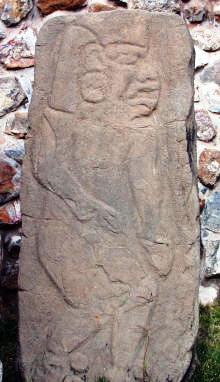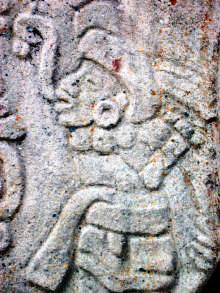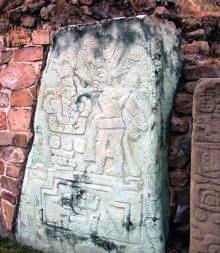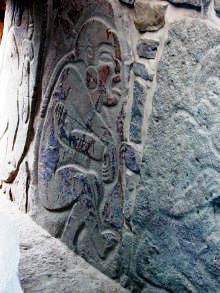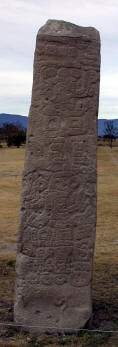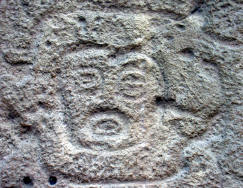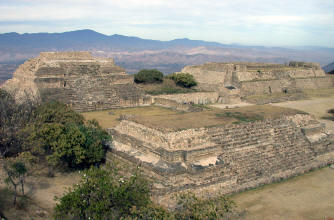The civic-ceremonial center of the Monte Albán site is situated atop an artificially-levelled ridge, which with an elevation of about 1940 m (6368 ft) above mean sea level rises some 400 m (1312 ft) from the valley floor. In addition to the aforementioned monumental core, the site is characterized by several hundred artificial terraces and a dozen clusters of mounded architecture covering the entire ridgeline and surrounding flanks (Blanton 1978). The archaeological ruins on the nearby Atzompa and El Gallo hills to the north are traditionally considered to be an integral part of the ancient city as well.
Besides being one of the earliest cities of
Mesoamerica, Monte Albán's importance stems also from its
role as the pre-eminent
Zapotec socio-political and economic center for close to a
thousand years. Founded toward the end of the Middle Formative
period at around 500 BC, by the Terminal Formative (ca.100 BC-AD
200) Monte Albán had become the capital of a large-scale
expansionist
polity that dominated much of the Oaxacan highlands and
interacted with other Mesoamerican regional states such as
Teotihuacan to the north (Paddock 1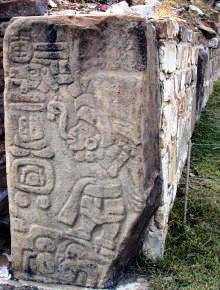 983;
Marcus 1983). The city had lost its political pre-eminence by
the end of the Late Classic (ca. AD 500-750) and soon thereafter
was largely abandoned. Small-scale reoccupation, opportunistic
reutilization of earlier structures and tombs, and ritual
visitations marked the archaeological history of the site into
the Colonial period.
983;
Marcus 1983). The city had lost its political pre-eminence by
the end of the Late Classic (ca. AD 500-750) and soon thereafter
was largely abandoned. Small-scale reoccupation, opportunistic
reutilization of earlier structures and tombs, and ritual
visitations marked the archaeological history of the site into
the Colonial period.
The etymology of the site's present-day name is unclear, and tentative suggestions regarding its origin range from a presumed corruption of a native Zapotec name such as “Danibaan” (Sacred Hill) to a colonial-era reference to a Spanish soldier by the name Montalbán or to the Alban Hills of Italy. The ancient Zapotec name of the city is not known, as abandonment occurred centuries before the writing of the earliest available ethnohistorical sources.



